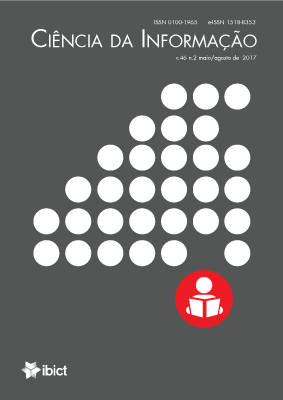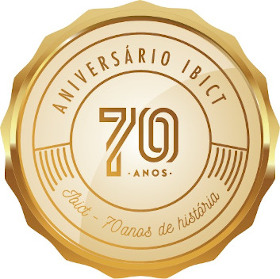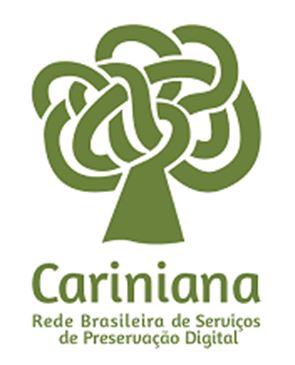El modelo de Bass en la literatura sobre Argopecten Purpuratus
DOI:
https://doi.org/10.18225/ci.inf.v46i2.4063Keywords:
Modelo de Bass, Cienciometría, Ciencias marinas, Concha de abanico, Argopecten purpuratus,Abstract
The purpose of this article is to explore the Bass model of diffusion of innovations applying it to the literature produced since 1956 to 2016, on Scallops, known scientifically as Argopecten purpuratus. 955 documents produced by 1590 different authors were identified. The authors producing the literature on Argopecten purpuratus have a preference for presenting their contributions in the form of articles published in academic journals, 69% of contributions have this form of publication. The model of dissemination of innovations by Bass estimated for this literature that the influence that researchers receive from reading other documents on this same subject in information systems is less than 1% (innovation coefficient). The coefficient of imitation q that measures the influence that a group of adopters exerts on the adoption decisions of other potential adopters is equal to 15.5%. The parameter m that shows the saturation point of the field, in this case, the saturation point of the authors publishing about Argopecten purpuratus would be reached when 2431 researchers in the field exist.
Downloads
References
BIBLIOGRAFIA
ARNTZ, W.E.; VALDIVIA, E. Incidencia del Fenómeno El Niño sobre los mariscos en el litoral peruano. Boletín del Instituto del Mar (Callao, Peru) v.11, p. 91-101, 1983.
AVILA, M.; PLAZA, U.; SCHNETTLER, P.; NILO, M.; PAVEZ, H.; TOLEDO, C. Estado de situación y perspectivas de la acuicultura en Chile. Chile, Instituto de Fomento Pesquero, 1998.
BANDIN, R.; MENDO, J. Asentamiento larval de la concha de abanico (Argopecten purpuratus) en colectores artificiales en la Bahía Independencia, Pisco, Perú. Investigaciones marinas, v. 27, p. 3-13, 1999.
BASS, F.M. A new product growth model for consumer durables. Management Science, v. 13, n. 5, p. 215-227, 1969.
BENITES, C. El desarrollo de la maricultura en el Perú con énfasis en la concha de abanico (Argopecten purpuratus) y langostinos (Pennaeus vannamei), pp. 196-201. In: H. SALZWEDEL Y LANDA (eds.). Recursos y dinámica del ecosistema de afloramiento peruano. Bol. Inst. Mar Perú-Callao, Vol. Extraordinario, 1988.
BENNION, BRUCE C.; NEUTON, LAURENCE A., "The epidemiology of research on 'Anomalous water'". Journal of the American Society forlnformation Science, 27(1), 53–56, Jan.–Feb. 1976.
BETTENCOURT, LUÍS M. A.; CINTRÓN-ARIAS, ARIEL; KAISER, DAVID I. ; CASTILLO-CHÁVEZ, CARLOS. The power of a good idea: quantitative modeling of the spread of ideas from epidemiological models, Physica A, v. 364, p. 513-536, 2006.
BOURDIEU, PIERRE. O campo científico. In: Bourdieu, Pierre. Sociologia. São Paulo: Ática, 1983. p. 122-155.
BRAND, ANDREW R. Scallop Ecology: Distribution and Behaviour. In: Scallops: Biology Ecology and Aquaculture: Developments in Aquaculture and Fisheries Science, edited by S. S. (ed.). Amsterdam: Elsevier., p. 517-583, 1991.
BRAUN, TIBOR. The epidemic spread of fullerene research. Angewandte Chemie, International Edition in English, v. 31, n.5, p. 588-589, 1992.
BRAUN, TIBOR ; LYON, W. S. The epidemiology of research on florinjection analysis: an unconventional approach. Fresenius Z. Anal Chem, v. 319, p. 74-77, 1984.
BUJDOSÓ, E.; LYON, W. S. ; NOSZLOPI, I. Prompt nuclear analysis: growth and trends: a scientometric study. Journal of Radioanalytical Chemistry, v. 74, n. 1, p. 197-238, 1982.
CALDEIRA, PAULO DA TERRA. Processo de crescimento epidemiológico aplicado a literatura brasileira de Doença de Chagas. Ciência da Informação, Rio de Janeiro, v. 4, n. 1, p. 5-16, jan./jun. 1975.
FARIDAH DJELLAL, FAIZ GALLOUJ. The laws of imitation and invention: Gabriel Tarde and the evolutionary economics of innovation. 2014.
FIGUEIREDO, JÚLIO CÉSAR BASTOS DE. Modelo de difusão de Bass: uma aplicação para a indústria de motocicletas no Brasil. Simpoi 2011, Anais. 16 Pages.
FORTH, L. ; WOODLOCK, J. Early prediction of market success for new grocery products. The Journal of Marketing, v. 25, n. 2, p. 31-38, 1960.
GARFIELD, EUGENE. The epidemiology of knowledge and the spread of scientific information. Current Contents, v. 35, p. 5-10, Sept. 1, 1980
Garvey, William D., Communication: the essence of science: facilitating information Exchange among librarians, scientists, engineers and students, Oxford, Pergamon Press, 1979.
GARVEY, WILLIAM D. ; GRIFFITH, BELVER C. Scientific communication as a social system. Garvey, William D. Communication: the essence of science: facilitating information Exchange among librarians, scientists, engineers and students, Oxford, Pergamon Press, p. 148-164, 1979.
GATIGNON, H., AND T.S. ROBERTSON. A propositional inventory for new diffusion research. Journal of Consumer Research, v. 11, p. 849 867, Mar. 1985.
GILBERT, G. NIGEL ; WOOLGAR, STEVE. The quantitative study of science: an examination of the literature. Science Studies, v. 4, n. 3, 279-294, July 1974
GOFFMAN, WILLIAM. An epidemic process in an open population. Nature, v. 205, n. 4973, p. 831-832, Feb. 20, 1965
–––––––––– Mathematical approach to the spread of scientific ideas: the history of Mast cell research. Nature, v. 212, n. 5061, p. 449- 452, Oct. 19, 1966a.
–––––––––– Stability of epidemic processes. Nature, v. 210, n. 5038, p. 786-787, May 21, 1966b.
–––––––––– An application of epidemic theory to the growth of science (symbolic logic from Boole to Gódel). International Congress of Cybernetics (1st: 1969 : Londón). Progress of cybernetics: proceedings of the first international congress of cybernetics, London 1969, London, New York, Gordon and Breach Science Pobl., p. 971–984, 1970.
–––––––––– Mathematical method for analyzing the growth of a scientific discipline. Journal of the Association for Computing Machinery, v. 8, n. 2, p. 173-185, April, 1971.
GOFFMAN, WILLIAM ; NEWILL, VAON A. Generalization of epidemic theory: an application to the transmission of ideas. Nature, v. 204, n. 4955, p. 225-228, October 17, 1964.
–––––––––– ; Communication and epidemic processes. Proceedings of the Royal Society A, v. 298, p. 316–334, May, 1967.
GOFFMAN, WILLIAM ; WARREN, KENNETH S. Application of the Kermack–Mckendrick theory to the epidemiology of Schistosomiasis. The American Journal of Tropical Medicine and Hygiene, v. 19, n. 2, p. 278-283, March, 1970.
GOFFMAN, WILLIAM ; HARMON, GLYNN. Mathematical approach to the prediction of scientific discovery. Nature, v. 229, n. 5980, p. 103–104, Jan. 8, 1971.
HAWKINS, DONALD T. The Literature of noble gas compounds. Journal of Chemical Information and Computer Sciences, v. 18, n. 4, p. 190-199, 1978.
HORSKY, D. The effects of income, price and information on the diffusion of new consumer durables. Marketing Science, v. 9, n. 4, p. 342-365, 1990.
HORSKY, D.; SIMON, L. S. Advertising and the diffusion of new products. Management Science, v. 1, p. 31-47. 1983
KANAGUSUKU GONDO, KENY. Evaluación de los bioincrustantes presentes en sistemas de cultivo suspendido de Argopecten purpuratus (lamarck, 1819) “concha de abanico” en la Bahía de Samanco – Chimbote. Lima, Perú : Universidad Ricardo Palma, 2009 (tesis para obtener el título profesional de Licenciada en Biología)
KALISH, S. A new product adoption model with price, advertising and uncertainty. Management Science, v. 31, n. 12, p. 1569-1585, 1985.
KALISH, S.; LILIEN, G. L. A market entry timing model for new technologies. Management Science, v. 32, n. 4, p. 194-205. 1986.
KAPOOR, KAWALJEET HAUR; DWIVEDI, YOGESH K; WILLIAMS, MICHAEL D. ; LAL, BANITA. An analysis of existing publications to explore the use of the diffusion of innovations theory and innovation attributes. World Congress on Information and Communication Technologies, Proceedings, p. 229-234, 2011.
KATZ, E. ; LAZARSDFELD, P.F. Personal influence: the part played by people in the flow of mass communication. Glencoe, Illinois : Free Press, 1955.
LESSIG, LAWRENCE, The future of ideas: the fate of the commons in a connected world, New York, Random House, 2001.
LLAGOSTERA, AGUSTÍN; BARÓN, ANA MARÍA ; BRAVO, LEANDRO. Investigaciones arqueológicas en Tulor 1. Estudios Atacameños, n. 7, p. 105-115, 1984.
MAHAN, V.; MULLER, E. ; BASS, F. M. New product diffusion models in marketing: a review and directions for research. The Journal of Marketing, v. 54, n. 1, p. 1-26, 1990.
MAHAJAN, V. ; PETERSON, R. A. Model for Innovation Diffusion, Beverly Bills, CA: Sage Publications, 1985
MANSFIELD, E. Technical change and the rate of imitation. Econometrica, v. 29, n. 4, p. 741-766, 1961.
MENDO, JAIME, L. ; ISLA, HENRY ORREGO ; TOMAYLLA, R. Manual Técnico Para El Cultivo Y Manejo Integral De La Concha De Abanico. Lima, Perú : Programa APGEP-SENREM; Convenio USAID-CONAM, 2001.
NEWTON, ISAAC. Letter from Sir Isaac Newton to Robert Hooke. Historical Society of Pensylvania, February 5, 1675.
MENDO, J., V. VALDIVIESO Y C. YAMASHIRO. Cambios en densidad, número y biomasa de la población de concha de abanico (Argopecten purpuratus) en la Bahía Independencia (Pisco, Perú) durante 1984-87. pp. 153-162. In: H. Salzwedel y Landa (eds.). Recursos y Dinámica del ecosistema de afloramiento peruano. Bol. Inst. Mar Perú-Callao, Vol. Extrordinario, 1988.
MENZEL, H. ; KATZ, E. Social relations and innovation in the medical profession: the epidemiology of a new drug. Public Opinion Quarterly, v. 29, p. 337-352,1955.
MUÑOZ OVALLE, IVÁN. Investigaciones arqueológicas en los túmulos funerarios del Valle de Azapa (Arica). Chungara: Revista de Antropología Chilena, v. 6, n. 80, p. 57-95, 1980.
PÉREZ PULIDO, MARGARITA ; TERRÓN TORRADO, MARÍA. La teoría de la difusión de la innovación y su aplicación al estudio de la adopción de recursos electrónicos por los investigadores en la Universidad de Extremadura. Revista Española de Documentación Científica, v. 27, n. 3, p. 308-329, 2004.
OLIVEIRA, SILAS MARQUES DE. Estudo do comportamento da literatura brasileira de teologia adventista: análise de crescimento epidêmico. Ciência da Informação, v. 13, n. 1, p. 25-52, jan./jun. 1984.
POZORSKI, SHELIA G. Prehistoric diet and subsistence of the Moche Valley, Peru. World Archaeology, v. 11, n. 2, p. 163-184, Oct. 1979.
ROGERS, EVERETT M. Diffusion of innovations. 1st ed. New York: Free Press of Glencoe, 1962.
TARDE, GABRIEL. Les lois de l'imitation : Étude sociologique. Paris : Félix Alcan, 1890.
TARDE, GABIREL. The Laws of Imitation, translated by E.C. Parsons with introduction by F.Giddings, New York, Henry, Holt and Co., 2003.
TARDE, GABIREL. The Laws of Imitation. Charleston : Bibliolife, 2010.
URBIZAGASTEGUI ALVARADO, RUBÉN; SUAREZ, JAVIER. Epidemic Theory in the literature on Lotka's law. Investigacion Bibliotecologica, v. 22, n.46, p. 91-111, 2008.
VALDIVIA, E.; BENITES, C. Informe sobre la prospección del recurso concha de abanico en la zona de Pisco. Informe Interno del Instituto del Mar del Perú-Callao, 1984, 13 p.
VALDIVIESO, V. Cultivo de moluscos en el Perú. En: Hernández R. (ed.). Cultivo de Moluscos en América Latina: Memorias de la 2° Reunión del Grupo de Trabajo Técnico en Ancud-Chiloe-Chile. Bogotá-Colombia, Editorial Guadalupe, p. 329-343, 1990.
WAGNER-DOBLER, ROLAND. William Goffman's mathematical approach to the prediction of scientific discoveries, revised. Proceedings of the 7th Conference of the International Society for Scientometrics and lnformetrics, July 5-8,1999, Colima, México, p. 522-531, 1999.
WARREN, KENNETH S ; GOFFMAN, WILLIAM. The ecology of the medical literaturas. The American Journal of the Medical Sciences, v. 263, n. 4, p. 267-273, April, 1972.
WEIMANN, G. The influentials. Albany, New York, NY : State University of New York Press, 1994.
WEISMANN, VIVIANA. Difusión de nuevas tecnologías y estimación de la demanda de nuevos productos: un análisis comparativo entre Argentina y EE. UU. Palermo Business Review, v. 1, p. 5-18, 2008.
WORTHEN, DENNIS B. The epidemic process and the contagion model. Journal of the American Society for Information Science, v. 24, n. 5, p. 343-346, Oct. 1973.
Downloads
Published
Issue
Section
License
- This publication reserves the right to modify the original, regarding norms, spelling and grammar, in order to maintain the standards of the language, still respecting author writing style;
- The final proofs will not be sent to the authors;
- Published works become Ciência da Informação's property, their second partial or full print being subject to expressed authorization by IBICT's Director;
- The original source of publicaton must be provided at all times;
- The authors are solely responsible fo the views expressed within the article;
- Each author will receive two hard copies of the issue, if made availalbe in print.



























